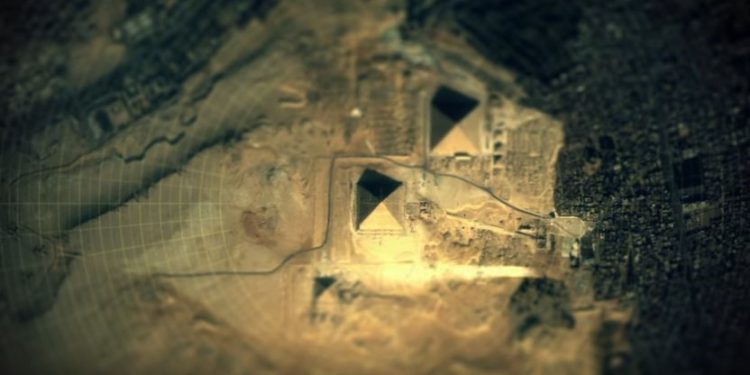Scientists at the Chinese Academy of Sciences have achieved something extraordinary—detecting unusual atmospheric activity over the Pyramids of Giza from thousands of kilometers away. While these strange phenomena, known as equatorial plasma bubbles (EPBs), often occur in regions like Egypt, what makes this discovery groundbreaking is not the event itself, but how it was observed.
EPBs are hot pockets of ionized gas that form in the upper atmosphere, particularly in low-latitude regions. Typically appearing after sunset, they disrupt communication and navigation systems by interfering with signals that pass through Earth’s ionosphere, the charged layer of the atmosphere. Though well-known, EPBs are still poorly understood, making their observation and study essential for scientists. What sets this discovery apart is that the EPB over Giza was detected not from space or nearby ground stations, but from China, using advanced technology.
China’s Low Latitude Long Range Ionospheric Radar (LARID), located on the island of Hainan in the South China Sea, uses innovative radar techniques to observe atmospheric disturbances over vast distances. By bouncing radar signals off the ionosphere and interpreting their reflections, LARID can track irregularities caused by EPBs thousands of kilometers away. This breakthrough in radar technology could transform the way scientists monitor space weather and atmospheric anomalies in real time, potentially across the entire globe.
The detection of the EPB above Giza from such a distant location highlights the power of this new technology. The researchers suggest that if similar radar systems were deployed in other regions, it could create a global network capable of continuously tracking these atmospheric events. This would be especially useful since EPBs are not only influenced by local weather patterns but also by solar activity. Having real-time data on their formation and behavior could help mitigate their impact on satellites, which are vital for global communications, GPS navigation, and financial systems.
In today’s interconnected world, even small disruptions in satellite operations can have significant consequences. A better understanding of EPBs and their influence on Earth’s atmosphere could lead to improved forecasting models, helping to protect the systems we rely on every day. This discovery marks an important step forward in atmospheric science, with the potential to safeguard global infrastructure from unexpected cosmic disturbances.











